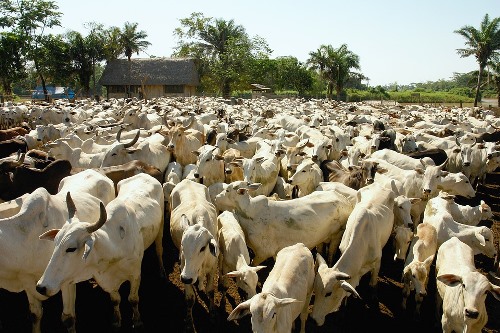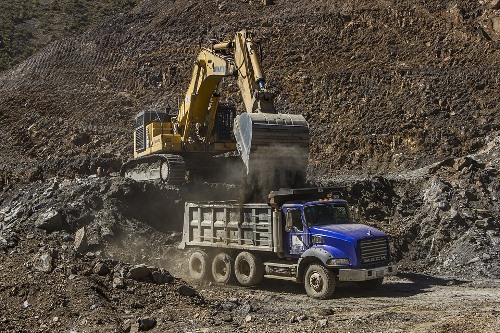|
Facts about Bolivia: Natural Resources Bolivia is very Rich in natural resources, many of which have not yet been exploited, are produced on a very small scale, or are extracted in manners that are not environmentally sustainable. They can be grouped into three main categories:
Renewable Natural ResourcesWater: It rains quite a lot throughout the country and water is an abundant resource both on the surface and underground, except during occasional times of drought. The many rivers, lakes, and lagoons that run through Bolivia are grouped into three main basin regions: the Amazon River Basin, the Del Plata River Basin, and the Endorreica Basin. Agriculture: The amount of land that can be cultivated in Bolivia is small in comparison to the size of the country. Most agricultural land can be found in the central valleys where grains and vegetables are grown, to the south, which is Bolivia’s vineyard and fruit growing region, and in the northern and Eastern plains where grains, sugar cane, sunflowers, and grains for cooking oil are produced.
Livestock: The tropical plains of Beni, Santa Cruz and the southern Chaco region are home to extensive pastures (matorrales in the case of Chaco) and cattle ranching is one of the region’s main activities, primarily for domestic consumption. In the western Andean region of the country sheep and camelids (llamas, alpaca, and vicuña) are more frequently raised and their fibers are used in the production of luxurious clothing lines. Energy sources: The various types of resources that can produce energy have not been fully exploited yet in Bolivia, due to lack of investment. In eastern Bolivia and the deserts of the Chaco region there are more or less long seasons of strong winds that would be ideal for wind-based energy and the rivers in these areas are also ideal for hydroelectric energy. Conditionally Renewable Natural ResourcesForests: Half of Bolivia is covered in forests. Most of Bolivia’s forest resources, both for lumber and non-lumber products, can be found in the departments of Cochabamba, Beni, Pando and Santa Cruz. Unfortunately, these resources are not always exploited in adequately and deforestation is advancing. Fauna: After Brazil, which is much larger than this country, Bolivia has the greatest biodiversity in South America with innumerable species of fauna, many of which don’t exist in any other country. To protect Bolivia plant and animal life, approximately 21 national parks and reserves have been established throughout the country. Here people study wildlife, carry out ecotourism projects, and in some reserves, establish sustainable forestry exploitation projects. Non-Renewable Natural ResourcesMinerals: There are extensive mineral deposits in the western region of the country, especially in Oruro and Potosí, which have been exploited since Pre-Colombian times, and still have minerals to be found. There are 238 minerals in Bolivia, which gives a good idea about this country’s mineral potential. The main minerals exploited in Bolivia are, by volumes of extraction, zinc, silver, tin, lead, antimony, wolfram, and gold. Other minerals extracted in lesser quantities are: salt, copper, cadmium, manganese, calcite, baritina, arsenic, ulexita, borax, and rocks for construction such as marble, granite, pizarra, and yeso. There is also large iron ore field in Eastern Bolivia called the Cerro de Mutún. It is the largest iron ore mine in the world.
Lithium: One of the largest lithium deposits in the world can be found beneath the beautiful salt beds of Uyuni, in the highlands of Eastern Bolivia. This is one of Bolivia's most popular tourist attractions. The government is constructing an enormous lithium plant so it can begin exporting to makers of lithium batteries, cellular phone batteries, electric car batteries, and more. Bolivia is investing a lot in what it hopes will be a wealthy future from lithium. Precious and semi-precious gems: In Eastern Bolivia and in the Andes, the following semi-precious gems are extracted: marmatita, pirrotina, pirita, arsenopirita, casiterita, estanina, magnetite, marcasita, quartz, siderite, fluorite, galena, calcopirita, topaz, turmalina, and dickita. Of these, casiterita and esfalerita are the most exploited, due to their commercial value. There is also Andean emerald, which is very dark green, esmeralinda, citrine, ayoreita, millennium, and gems that look similar to opal. However, the most famous of these is the ametrine, which is caused by the fusion of citrine and amethyst. These exist only in Santa Cruz and are called “bolivianite” because Bolivia is the only place in the world in which they are found. Gas and petroleum: Bolivia’s proven and probable volumes of gas were estimated at 76.4 billion cubic feet in 2006, although a new gas field in Santa Cruz announced in August 2010 the discovery of huge natural gas field very near an existing gas field. This amount only includes free gas, not gas combined with oil, making Bolivia the number one natural gas country in South America, and number two in oil, after Venezuela. Bolivia’s oil and gas fields are not producing at maximum capacity yet. In fact, there are still many wells to be drilled. These resources are exported to neighboring countries such as Argentina and Brazil, in variable volumes. Production is concentrated in the departments of Tarija, Chuquisaca, and Santa Cruz, the country’s three oil-producing states, and those with the largest fields. Petroleum and its derivates are refined mainly in Cochabamba and Santa Cruz.     |

